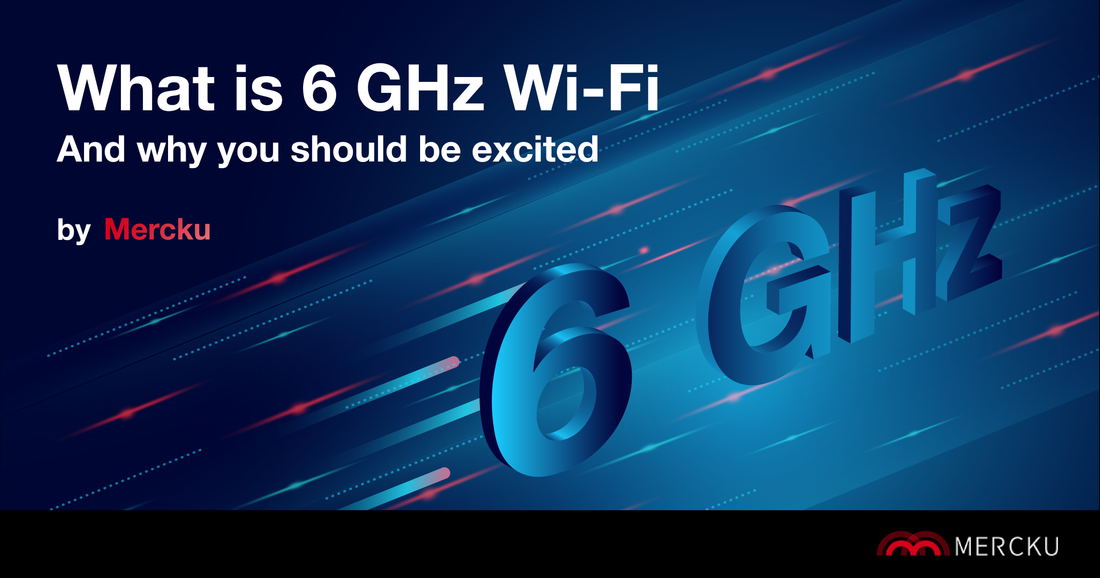
Have you ever wondered how your laptop, cellphone, or other mobile devices connect to the internet? "Through WiFi"- that's the most obvious answer. It is, but then how does WiFi communicate with our devices? Well, the quick response is via radio frequencies, and we'll jump into more detail in just a bit, along with insights on the much anticipated 6 GHz spectrum and what it means for your WiFi experience.
Restricted to the 2.4 GHz and 5 GHz bands in recent years, we have reached the point where there are now more WiFi networks in a building than radio stations available to listen to in a city. In April of 2020, the Federal Communication Commission (FCC) announced its approval to allocate an uncharted fresh spectrum, the 6 GHz band, to reduce pressure from current frequency bands while delivering high speeds.
Well, what makes the 6 GHz band different?

6 GHz has higher throughput
The number of devices connected to WiFi in homes and public areas has significantly increased over the last decade, especially in this era of home automation and IoT. Current frequency bands are not sufficient to cater to growing bandwidth requirements. With the new 6 GHz band, more throughput is available for reasons including an increased number of non-overlapping channels and greater bandwidth.
6 GHz has more non-overlapping channels
There is a limit to the number of channels each band has, which are limited further by the number of non-overlapping channels. These non-overlapping channels are essential in reducing signal interference between devices, ultimately resulting in slower wireless speeds.
The 2.4 GHz band has 11 channels with only three non-overlapping channels (1, 6, 11); therefore, in crowded areas where many devices are connected, signal interference will result in slower internet speeds.

The 5 GHz band overcomes the weaknesses of 2.4 GHz and is ten times wider than the 2.4 GHz band with 24 non-overlapping channels, making it even better. However, some channels of 5 GHz have been in use for the government and the military, so in reality, there are only eight non-overlapping channels available to the public.
The introduction of 6 GHz includes 14 non-overlapping 80 MHz channels, all for public use, reducing the opportunity for co-channel signal interference and ultimately give you better wireless speeds.
6 GHz comes packed with extra bandwidth
The new 6 GHz band will be adding 1,200 MHz of extra bandwidth, meaning users can utilize the 40 MHz and 80 MHz channels plus the newly available 160 MHz channel widths. It is recommended to use smaller channel widths despite reduced throughput to reduce co-channel interference; however, the 6 MHz band overcomes this with extra space on the wireless spectrum. To put this into perspective, 5 GHz band can only support two non-overlapping 80 MHz channels or a single 160 MHz channel, while the 6 GHz band can support fifteen 80 MHz channels and seven 160 MHz channels. This means much less channel overlap and much more bandwidth!
6 GHz and Uniqueness of Mesh WiFi
Similar to how the 5 GHz band has a shorter ranger than 2.4 GHz, higher throughput, a more significant number of channels, and higher bandwidth come at the cost of more considerable signal attenuation in the new 6 GHz band; this is where Mesh WiFi comes in. In a mesh WiFi system, the central router and multiple mesh points may be installed throughout a large space to increase wireless 6 GHz coverage. However, unlike the signal extenders, the units form one seamless and unified blanket network that broadens reach and connectivity strength. When roaming, your device maintains a connection to a single SSID without hiccups in connection, giving you the full potential of 6 GHz WiFi around any space.
Using 6 GHz WiFi at home
6 GHz WiFi delivers 1.2 Gbps at even 7 meters away from an access point with obstructions.
Use Cases:
- Residential Multi-AP/mesh networks
- Multiple dwelling units (MDU) Single-AP networks
- High-density enterprise networks
- Indoor public venues
- Industrial IoT
WiFi 6E - The Game changer
The development of 6 GHz and WiFi 6 alone are grand achievements in this new age of WiFi, and combining the two to become WiFi 6E is game-changing for the tech world and the economy. WiFi Alliance* statistics show that the value of Global WiFi will increase by up to $3.47 trillion by 2023, and unlocking 6 GHz WiFi will lead to even more significant economic contributions and a better-connected world.
What to look forward to
WiFi 6E delivers a considerable increase in network efficiency and capacity for dense population centers. WiFi 6E will immediately impact network performance in crowded places such as stadiums or apartment buildings. With the global increase in fibre internet coverage, the necessity of WiFi 6E will increase to leverage the full capacity of gigabit broadband connections.
Much like how there is not much 8K video content available, it's not as beneficial yet to purchase an 8K television when you can't use it to its full potential. Similarly, the biggest issue with purchasing WiFi 6E routers is that there are only a few devices on the market capable of using its WiFi 6 features or utilize the 6 GHz band. The few devices available on the market now are using a prototype version of the new standard. In 2021, markets will see an influx of 6E chips for commercial use. With that being said, devices compatible with WiFi 6E will be hitting the mainstream markets within the next few years.
With a completely new spectrum unlocked, we are sure to see many innovative products being released in the future.

